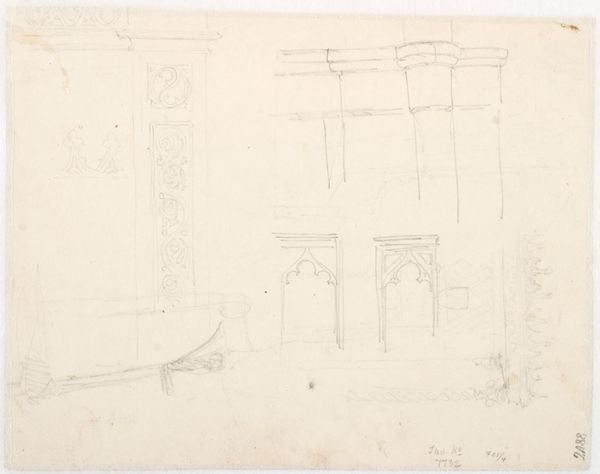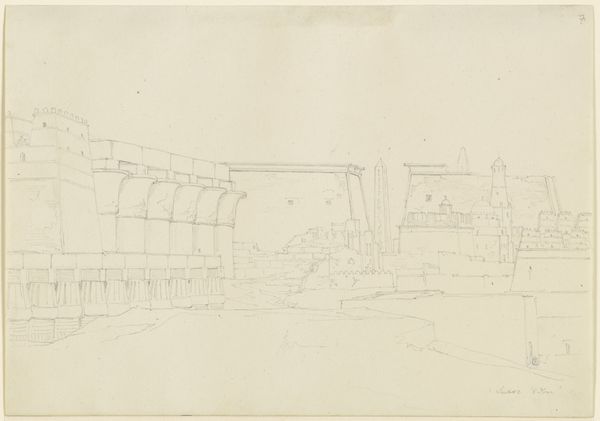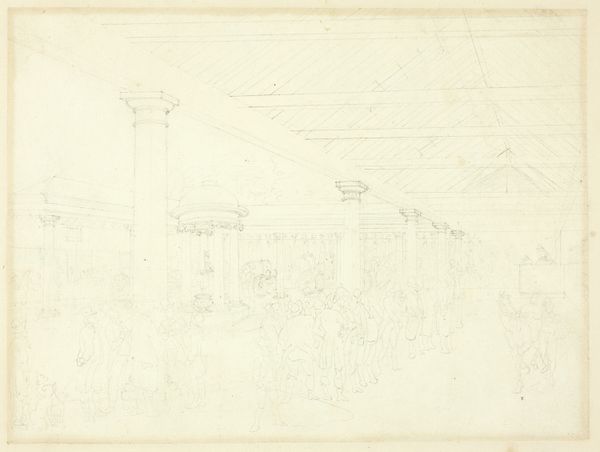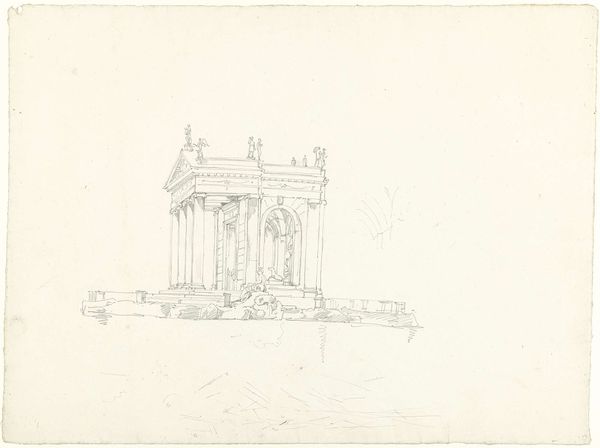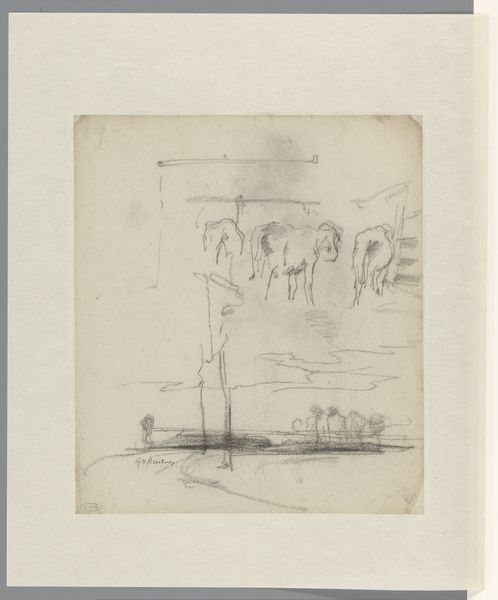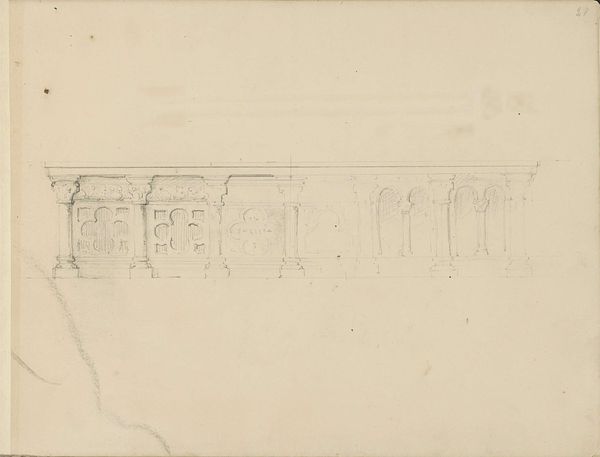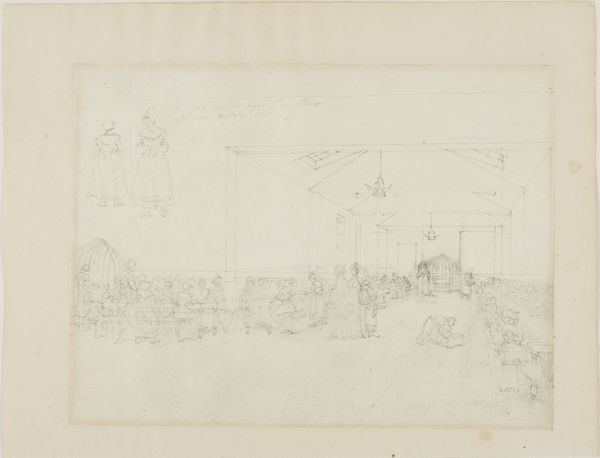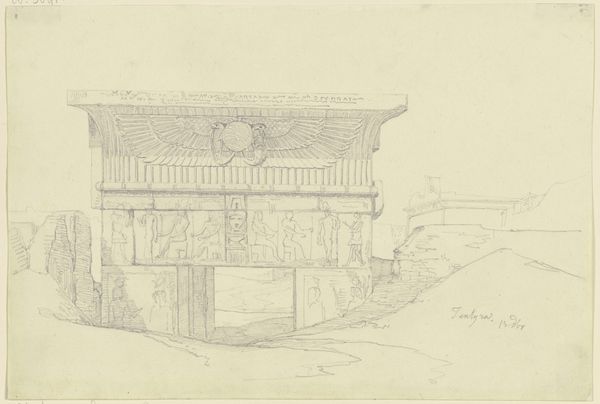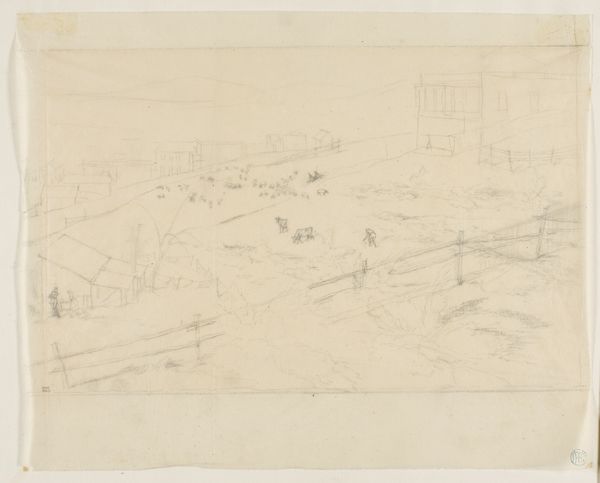
drawing, paper, pencil, architecture
#
drawing
#
landscape
#
paper
#
ancient-mediterranean
#
pencil
#
architecture
Copyright: Public Domain
Curator: This ethereal drawing is Friedrich Maximilian Hessemer's "Temple of Isis in Philae," created around 1830. He captured the ruins in pencil on paper. Editor: It feels like a memory barely clinging to the page, all delicate lines and whispers of grandeur. There's such a sense of stillness, almost ghostly, as though the artist caught the echo of something long vanished. Curator: Yes, the drawing reflects a Romantic interest in ruins and the ancient world. Hessemer was particularly fascinated by Egyptian architecture and symbolism, and the temple, of course, was dedicated to Isis, a goddess embodying magic, motherhood, and nature. The architectural motifs are striking. See how the columns and towering pylons frame the space? Editor: Those pylons are so fascinating—like immense, almost theatrical wings. They dominate everything, even in their dilapidated state. I keep wondering what it felt like to stand there in person, dwarfed by these immense structures. You know, when they still resonated with their original, vital energy. It must have been overwhelming. Curator: Absolutely. The pylons serve as symbolic gateways between worlds, emphasizing the sacredness of the space. Each element would have carried profound symbolic weight for the initiates. Editor: I am really intrigued by Hessemer's technique as well. The lightness of the pencil somehow magnifies the sense of temporal distance, but at the same time the meticulous attention to detail draws you in, doesn't it? I am thinking of the columns, the hieroglyphs. There's an attempt to grasp and somehow contain its past life. Curator: Precisely, to grasp a past life that speaks to something eternal and fundamentally human about belief and creation. The drawing documents not just the physical structure but a cultural and spiritual legacy, captured on the cusp of colonial Egypt. Editor: So, ultimately, this isn't just a drawing of ruins but a reflection on how we perceive, document, and even idealize vanished worlds? It feels very haunting, you know. A reminder of everything lost, transformed. Curator: I couldn’t agree more. It really shows how an image can capture so much time, both as a physical record and as an emotional echo.
Comments
No comments
Be the first to comment and join the conversation on the ultimate creative platform.
